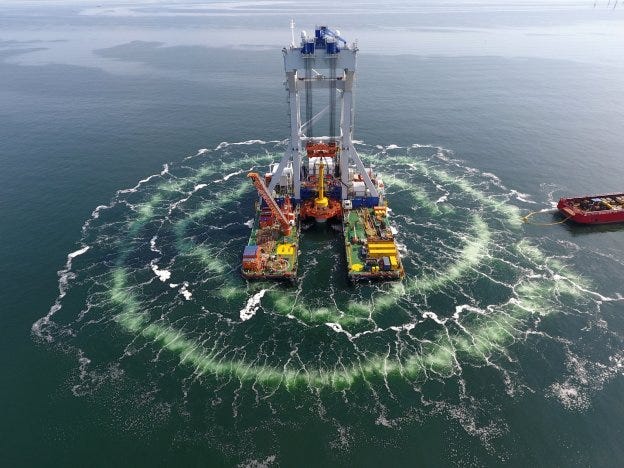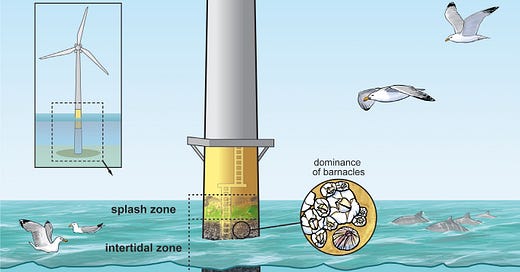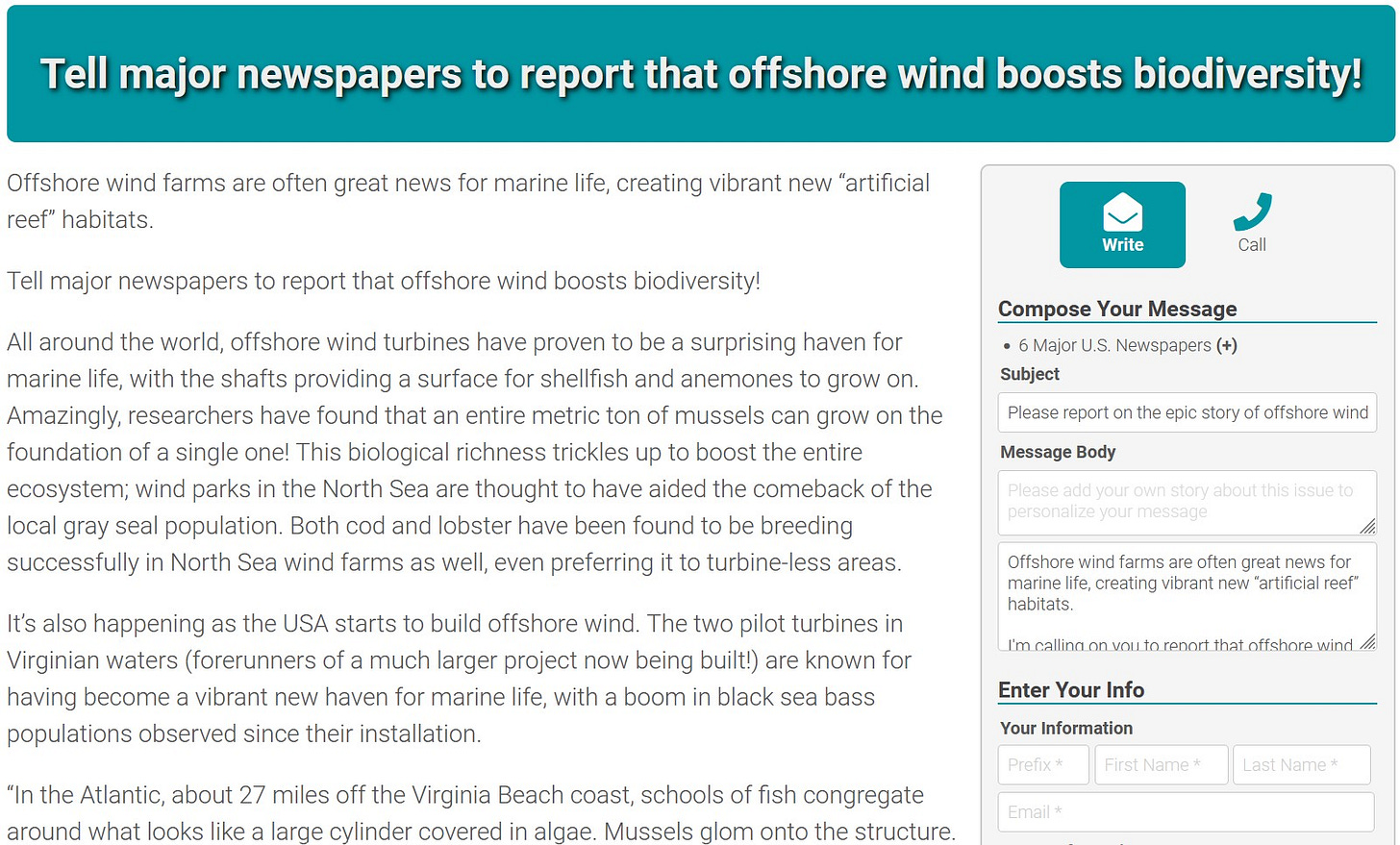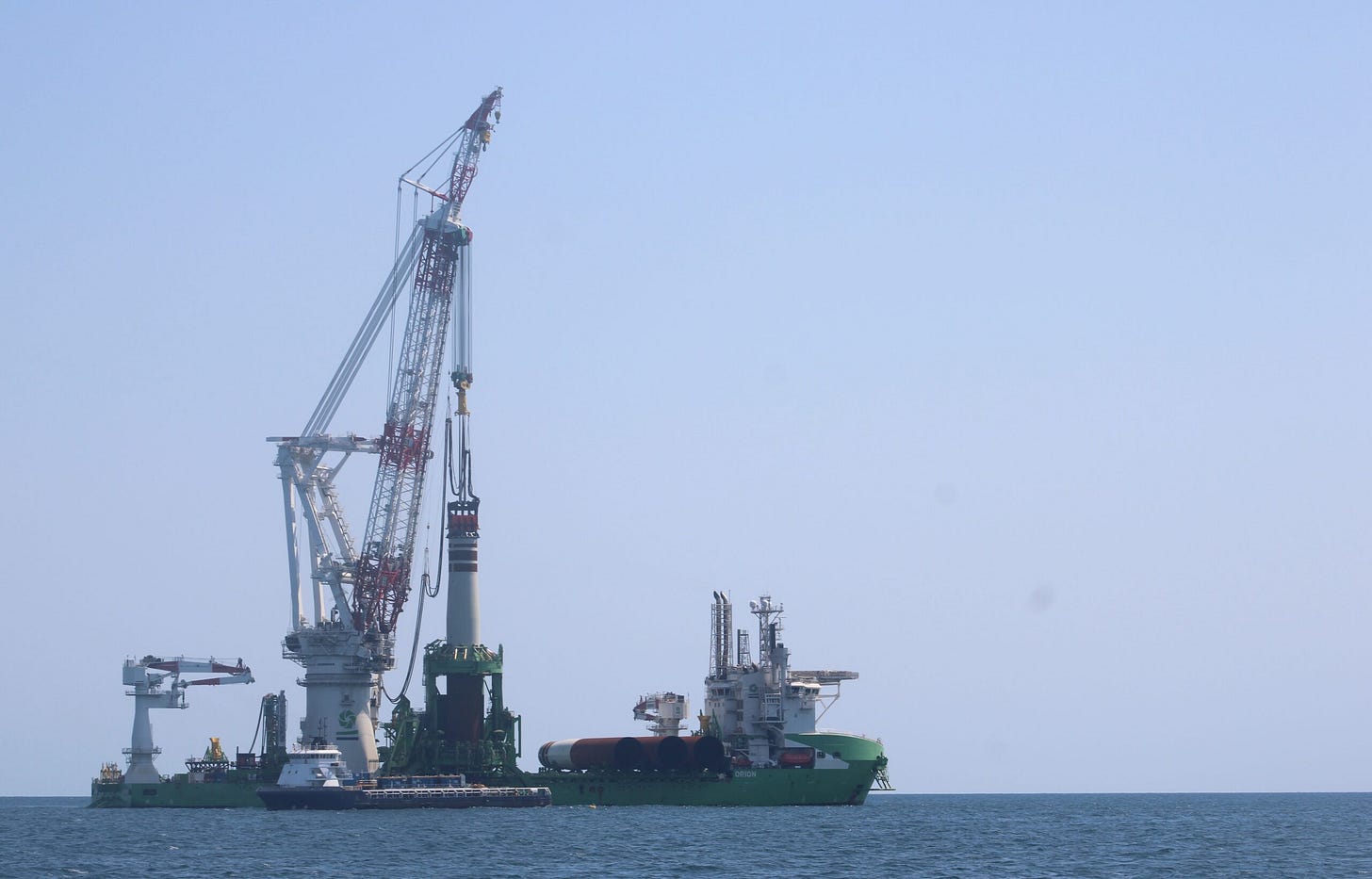Offshore wind farms are often great news for marine life, creating vibrant new “artificial reef” habitats.
Tell major newspapers to report that offshore wind boosts biodiversity!
Touch or scan the QR code below to take today’s action in the app and earn trees!
Or take action on the Internet:
Reasons For Hope
All around the world, offshore wind turbines have proven to be a surprising haven for marine life, with the shafts providing a surface for shellfish and anemones to grow on. Amazingly, researchers have found that an entire metric ton of mussels can grow on the foundation of a single one! This biological richness trickles up to boost the entire ecosystem; wind parks in the North Sea are thought to have aided the comeback of the local gray seal population. Both cod and lobster have been found to be breeding successfully in North Sea wind farms as well, even preferring it to turbine-less areas.
It’s also happening as the USA starts to build offshore wind. The two pilot turbines in Virginian waters (forerunners of a much larger project now being built!) are known for having become a vibrant new haven for marine life, with a boom in black sea bass populations observed since their installation.
“In the Atlantic, about 27 miles off the Virginia Beach coast, schools of fish congregate around what looks like a large cylinder covered in algae. Mussels glom onto the structure. Even the occasional sea turtle or giant ocean sunfish pays a visit.
The source of this bustling underwater scene is somewhat unlikely — a wind turbine…
Mussels, algae, mahi, seabass, baitfish and more circle the structure or set up shop directly on it…Holes in the turbine to release pressure and allow water to ebb and flow have also led to marine life passing through or residing inside.”
-The Virginian-Pilot
The full Coastal Virginia Offshore Wind project’s 176 turbines (under construction since May 2024!) will replicate this on a grand scale to create an amazing new artificial reef ecosystem in the Atlantic, as well as providing abundant clean electrons to help fight climate change and air pollution!

And offshore wind farms are rapidly adopting fascinating new technologies to be even better “good neighbors” to wildlife. One standard is the “bubble curtain,” blowing thick layers of bubbles around offshore wind turbine work sites to prevent loud noises from disturbing whales and other wildlife, and there’s a lot of innovation this space.
During the construction of the Vesterhav North wind farm off the coast of Denmark, a local pod of dolphins continued their activities undisturbed thanks to a “hydro sound damper system” (similar to a bubble curtain, but a physical wall instead of bubbles) masking the noise of the foundations being installed. Monitoring showed that the dolphins have not moved or changed their behavior.
In Germany, Ørsted has successfully tested another way to make wind turbine installation quieter, using jetting instead of pile driving to sink turbine foundations into the seafloor to reduce the noise level by over 99%.
The Netherlands halted turbine rotation at their Egmond aan Zee and Borssele offshore wind farms for four hours on May 13th, 2023, a time that scientists had predicted would be a peak moment for the spring bird migrations across the North Sea. This pilot program to help maximize the safety of migrating birds was a worldwide first, and it’s set to grow quickly.
This is happening with the burgeoning American offshore wind industry as well!
Vineyard Wind, the under-construction 800 MW offshore wind farm off the southeastern coast of Massachusetts, is using American-made bubble curtain technology to minimize undersea noise and avoid disruption to wildlife when it installs its turbines’ “monopile” foundations. This was the first time an American company provides bubble curtain technology to an American offshore wind farm, a heartening sign for the development of the domestic offshore wind industry.
And the under-construction Coastal Virginia Offshore Wind project is using a double layer of bubble curtains, as well as Protected Species Observers whose warnings halt construction if a vulnerable creature swims into the work area. All of this work will only be occurring from May through October period in both 2024 and 2025 to avoid the North Atlantic right whale migration over the winter. When complete in 2026, it will generate enough electricity for 660,000 homes.
The burgeoning American offshore wind industry isn’t just a source of vitally needed clean electrons to decarbonize the grid, its projects have overwhelmingly positive environmental impacts and are built with extraordinary care and sensitivity. But most people haven’t even heard this story - and offshore wind needs all the friends it can get to survive turbulent political times.






